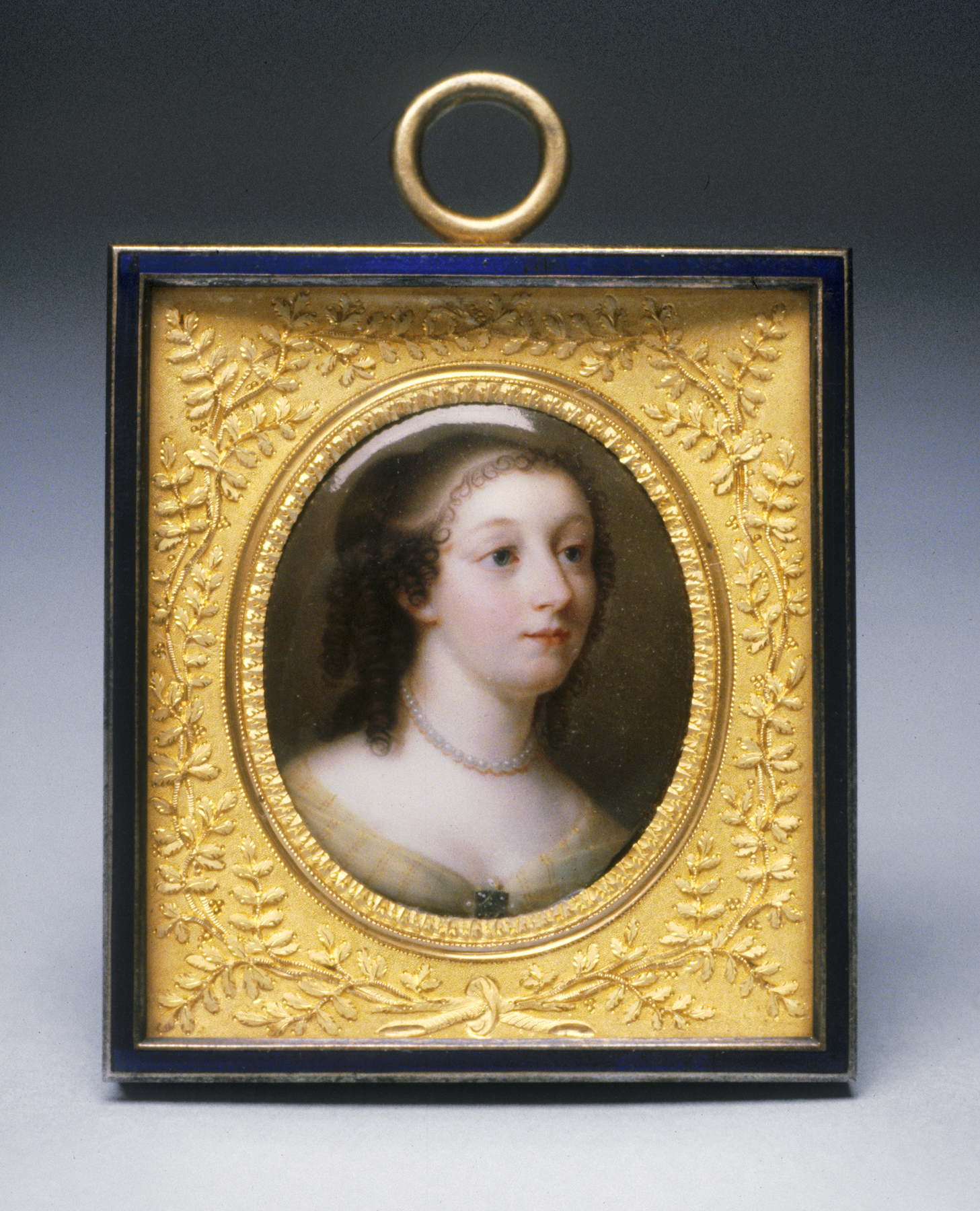Portrait of a Lady
(Baroque Europe )
Petitot was a major French portraitist in painted enamel who learned the technique from Toutin. He was active at the English court until the execution of King Charles I in 1649. Petitot then offered his services to Louis XIV, and it is for portraits of the French king and his court that he is best known.
His enamels, with their refined detailing, soft modeling, and polished surfaces, suited the court's taste and had many imitators. Enamel was considered to be an improvement over oil or tempera for miniatures: the hard, lustrous surface was more durable, in keeping with the character of jewelry or other luxury objects to which they could be applied.
Provenance
Provenance (from the French provenir, 'to come from/forth') is the chronology of the ownership, custody, or location of a historical object. Learn more about provenance at the Walters.
Abraham Jay Fink, Baltimore, 1953 [no. A-196]; A. Jay Fink Foundation, Inc., Baltimore, 1963, by bequest; Walters Art Museum, 1963, by gift.
Exhibitions
| 1999-2000 | Vive la France! French Treasures from the Middle Ages to Monet. The Walters Art Gallery, Baltimore. |
| 1958-1959 | Four Centuries of Miniature Painting from the Collections of the A. Jay Fink Foundation, Inc. and A.J. Fink, Personally. Baltimore Museum of Art, Baltimore. |
Conservation
| Date | Description | Narrative |
|---|---|---|
| 5/1/1964 | Treatment | other |
Geographies
France, Paris (Place of Origin)
Measurements
2 1/2 x 1 5/8 in. (6.4 x 4.1 cm)
Credit Line
Gift of the A. Jay Fink Foundation, Inc., in memory of Abraham Jay Fink, 1963
Location in Museum
Accession Number
In libraries, galleries, museums, and archives, an accession number is a unique identifier assigned to each object in the collection.
In libraries, galleries, museums, and archives, an accession number is a unique identifier assigned to each object in the collection.
38.235


